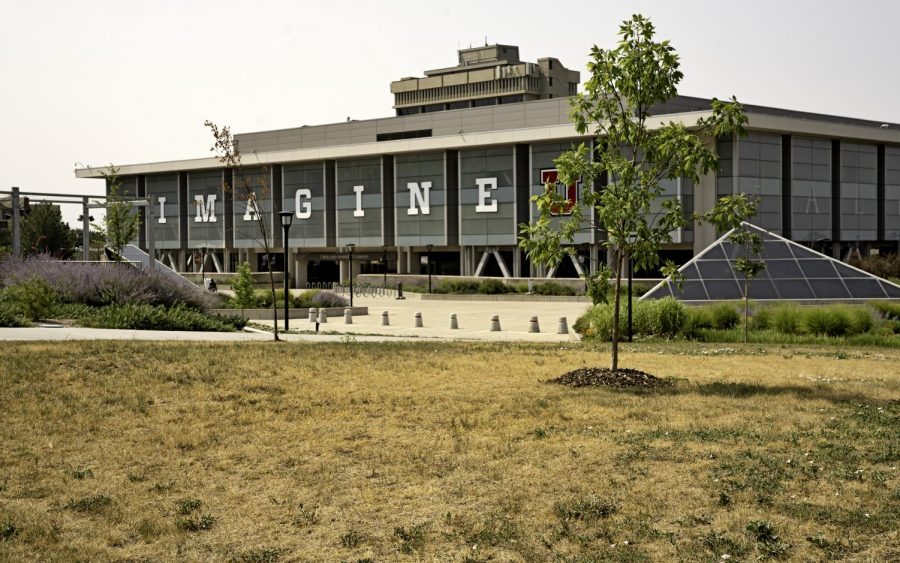Big Campus, Big Responsibility: U Conserves Water During Ongoing Drought
The drought’s effect on campus with view towards the Marriott Library on July, 24 2021. (Photo by Kevin Cody | The Daily Utah Chronicle)
September 14, 2021
Late August and September of 2021 have brought unusual amounts of rain to the University of Utah’s campus. However, as of Sept. 12, 71.35% of Salt Lake County was in “exceptional drought” status with increased fire restrictions.
For the majority of Summer 2021, campus grass was yellow in order to comply with executive orders released by Gov. Spencer Cox, requesting watering to be limited to two days a week.
“It’s been kind of a nice stress test for campus,” said John Walker, the U’s grounds supervisor. “There are definitely areas that yellow out quicker than others. It’s kind of been varied across campus. You see some lawns that are still really green and look really good.”
Gov. Cox said 2021 could be the worst drought year on record.
“Utah state government is leading the way by cutting back on water use at all state facilities, but all of us — from private businesses to local governments to individuals — need to conserve water now more than ever,” he said.
While the U followed the Governor’s order, it took some time to adjust to the new watering guidelines.
“We are following the state mandate cutting back to two days a week,” Walker said. “It took us about a week to get through all the controls and make those programming changes.”
The U grounds teams has been actively working to save water prior to this year’s drought. Two years ago, campus received a new water system that made a major impact in water conservation.
“Two years ago we upgraded our irrigation systems to Weathertrak, with that we were able to cut back about 18 to 20%,” Walker said.
The system is run from a website and the entire campus is under a controller.
“It’s an integrated controller system where all of our irrigation systems can be ran from a central web based system, which gives us an incredible amount of control on how everything waters,” U Irrigation Technology Specialist Trevor Widdison said.
The new system recognizes water leaks and breaks and will turn off to avoid wasting water.
“The new system is designed to let us know when that happens and shut that valve down before it pours a bunch of water down the storm drain,” Widdison said.
Widdison explained this is a big help.
“We actually lose quite a bit of water to those types of breaks,” Widdison said.
The landscape is going to be impacted by less watering, but campus crews believe the long term benefits outweigh the possible consequences.
“It’s gonna hurt our landscape a little bit, but for the amount of water we’ll be able to save, it will be worth it,” Widdison said.
Widdison said as a huge water user, the U has a big responsibility to conserve its water usage.
“We’re all very aware of that, your responsibility to save goes up, so we’re all doing whatever we can,” Widdison said.
Ground crews also saw an adjustment in their work load. The team is not having to mow as much as before.
“We are mowing a lot less. The grass doesn’t seem to be growing as much as usual,” Widdison said.
On the other hand, teams are having to hand water certain plants to ensure they will survive the drought.
“We’ve been doing a lot of hand watering,” Walker said. “We have a couple 200 gallon water carts that will drive our own campus and just water trees individually to make sure that they have enough water and they stay alive and get through the summer.”










Alex Orange • Sep 17, 2021 at 7:16 pm
I’ll believe it when I see it. They’re still watering the asphalt of the MEB parking lot multiple times per week. Maybe they only bother with the areas that get publicity.